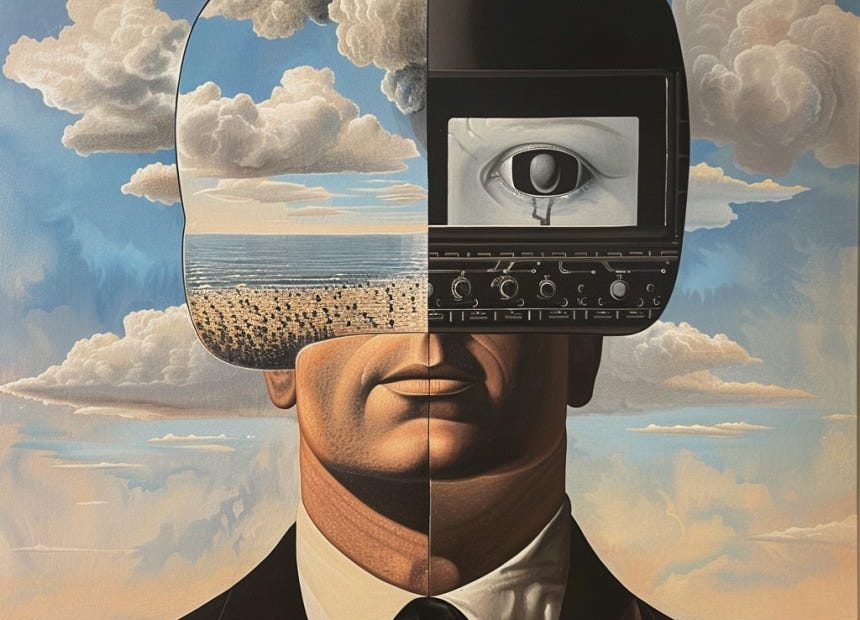Everyone’s got AI on the brain.
And on their lips.
If I didn’t have 37 conversations about AI last week, I had 38.
Granted, some were self-imposed. See, I’m working on a presentation on the subject of unlocking creativity. And spoiler alert: AI holds some of the keys.
But no matter what, AI is not on the QT. It’s front and center.
Now, what I thought might be helpful for you is to simply share a bit about my experience with AI.
And before you get too excited, understand I’m no expert.
I’m just a dude messing around with a keyboard and a bunch of platforms and ideas.
First things first, AI isn’t new. The vision of a machine with human characteristics has been around since the ancient Greeks brought us Talos, a giant bronze automaton who guarded Crete.
But things got quite serious in 1956 when scientists at Dartmouth attended the first AI workshop. And started to fiddle around with the notion of machines thinking and being like humans.
(According to Wikipedia, in 1955, John McCarthy, then a young Assistant Professor of Mathematics at Dartmouth College, decided to organize a group to clarify and develop ideas about thinking machines. He picked the name ‘Artificial Intelligence’ for the new field.)
Fast forward to today and AI has become all the rage due to the advancements in computing power, software sophistication, machine learning and the wide availability of big data.
Oh, and let’s not forget: hype! Media and social media hype is contributing to the accelerated adoption, too. (FYI, it took ChatGPT only 2 months to get to 100 million users. For perspective, it took TikTok 9 months to reach the same amount of users. Uber: 6 years and six months!)
Now, I started my journey with the words. What the heck are we really talking about?
Here are some definitions:
Artificial Intelligence (AI)
The idea and field of study that machines can think and act like humans.
Machine Learning
A way of teaching computers to learn from data, instead of just following a set of rules or protocol.
Deep Learning
A type of Machine Learning (see above) that uses artificial neural networks (think lots of electronic brains) that learn complex patterns in data.
Generative AI (GenAI)
A type of artificial intelligence that can create new content like text, images and videos.
Large Language Models (LLMs)
Powerful AI systems that can understand and generate human-like text.
Ok, there you have it from the general to the specific.
I’ve mostly been playing around with LLMs and GenAI.
And this is where you can start to play around and apply it to your work.
Here are some use-cases and platforms that I’m using.
For general info and questions. Also, not half-bad for writing limericks.
Questions. And prompts. Also used this once to take a Teams meeting recording and organize it into coherent notes.
I like this one for questions and for writing routine things. For example, Perplexity is perfect for giving you a rough draft on what you might say in a complaint about your electric bill.
You could also ask Perplexity about the 5 best ways to get out of a ticket if you have to go up against the DMV.
I like this one to organize notes and turn a mass (and a mess) of thinking into a presentation outline.
Also good to ask for things like recipes. “Claude, I have two cans of garbanzo beans and some olive oil, what can I make for dinner with that?” And next thing you know there’s four Mediterranean-inspired recipes.
Now for images…it’s GenAI.
This platform gives you quite a bit of options and styles. I’ll prompt it like this: “…/imagine an iconic representation of Artificial Intelligence done in the artistic style of Rene Magritte.” (That’s the first prompt I used for the image above.) The only drawback to Midjourney is you sign up for it through another platform, Discord. It makes the initial start of the process a bit clumsy.
This platform offers an elegant and easy user experience. And almost as many artistic styles as Midjourney.
A bit newer and working its kinks out.
I recently played around with this A.I. to write a song. I had no reason to write a song but it was fun.
So there you have it. A primer of sorts on AI.
Oh, and in case you were wondering this post was written in RobGPT.
Rob Schwartz is the Chair of the TBWA New York Group and an executive coach who channels his creativity, experience and wisdom into helping others get where they want to be. This was originally posted on his Substack, RobSchwartzHelps, where he covers work, life, and creativity.
Header image courtesy the author, created in Midjourney.
